Garlic is one of our favorite crops to grow. Delicious in every season and marvelously medicinal, garlic is also easy to grow. If we had to pick only a handful of crops to grow each season, garlic would always be one. Always.
Garlic swells from the size of a dime to a full-size bulb in ~5 short weeks, from early June to mid-July. June is the time to give her all you’ve got. If you’d love more insight & dozens more video tutorials, look what we made you:
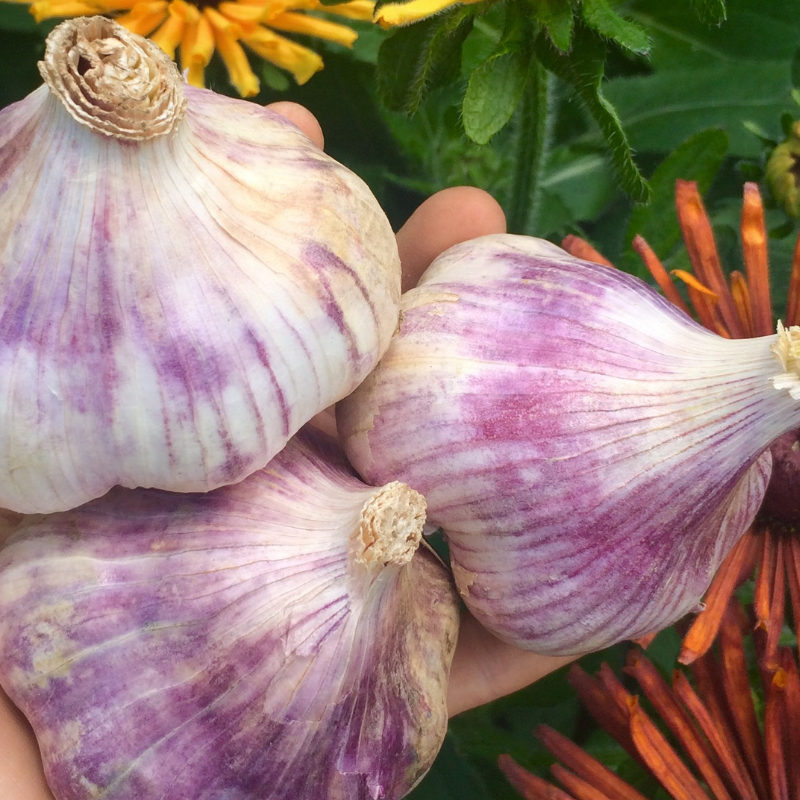
Enjoy Fruition's Course...
Growing
Garlic & Shallots
Organically!
Fruition’s free online course shares dozens of video tutorials to surround you with abundance for seasons to come.
We look so forward to joining you on the journey!
2 Easy Ways to Boost Your Garlic Harvest
Small bulbs are most commonly the result of nutrient deficiency and weed pressure, so here are the 2 easy ways to ensure you have abundant nutrients and manageable weeds to optimize your garlic harvest this season!
1. Feed Your Garlic
Garlic is a heavy feeder, requiring lots of nutrients to grow large and store long.
Here are the best times and ways to ensure your garlic has full access to abundant nutrients:
Feeding Garlic in Fall:
Before you plant, add rich fertility as you prepare soil. We add mature compost alongside our organic garlic and shallot fertilizer, a combination of alfalfa meal and so much more that Matthew has been dialing in for years to grow particularly delicious, long-storing and abundant garlic. To offer both short and long-term nutrient release and soil building, we add organic granular fertilizer for immediate access to 100+ micronutrients as as well as nourishing long-term soil fertility with our organic chicken manure compost crumbles. This is the best time to incorporate any additional micronutrients, depending on your soil test results.
Mulch with 3 to 6″ of deciduous leaves! They’re remarkably nutrient-dense, it’s true. Just make sure you put them through a chipper/shredder first so you don’t inhibit the garlic’s growth as well as the weeds.
A little fish emulsion goes a long way in boosting plant health, abundance and nutrient density.
Feeding Garlic In Spring/Early Summer:
Mulch with more deciduous leaves! They decompose and compress over time and our aim is to always have 3 to 6 inches of leaves consistently mulching as well as nourishing our garlic.
Once your garlic is 6 inches tall, foliar feed your garlic (and everything else, for that matter) with compost tea, worm castings tea or our favorite, Fish and Kelp Emulsion. Apply the diluted emulsion (one ounce in one gallon of water) as either foliar spray or root drench every 10 to 14 days to bring a broad spectrum of macro- and micro-nutrients to your garlic. May and June are the key months to be supplementing with foliar feeds. We prefer fish plus seaweed emulsion, compared to pure fish emulsion, for it’s more balanced vegetative growth for our garlic bulbs.
When your garlic is 6 inches tall, they benefit from a little extra fertility at their roots, as well. We add about a tablespoon of our organic garlic and shallot fertilizer and/or compost at the base of each garlic stalk, either sprinkling it on top or gently massaging it into the soil to help incorporate more quickly.
How can you tell if your garlic is hungry?
Look for yellowing leaf tips, especially on the lowest leaves. Yellowing indicates that your garlic is taking nutrients from those lowest leaves to feed new growth, since it isn’t accessing those essential nutrients from the soil. Bring on the fish emulsion!

Hungry garlic has yellowing leaf tips, especially on the lowest leaves.
Last Call for Feeding Garlic:
Here in Zone 5, garlic throws their scapes about mid-June. By that time, much of how large they’ll develop has already been determined by the pre-existing nutrients they’ve had access to, which is all to say, late May/early June is the final call for surrounding your garlic with ample fertility.
When is it Too Late to Feed Garlic?
Once your scapes emerge, resist feeding your garlic. With excess nutrients, garlic struggles to go dormant quickly and consistently, making dry down and curing slower and less effective, so winter storage is not nearly as long.
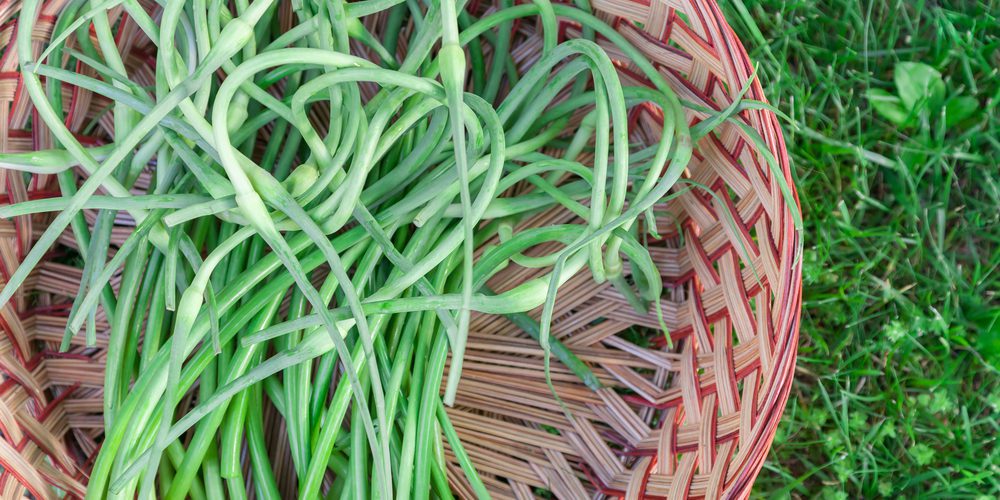
2. Weed Your Garlic
The long, narrow leaves of garlic don’t shade the weeds below, making weeds grow fast and mulching essential.
Weed consistently and well, every ten days to two weeks, and your garlic will thrive! Weeding this often means you’re eliminating smaller weeds, which take much less time to weed than huge weeds, so it doesn’t take as much time as you may expect. If you plan to use this method, just be sure you plant each garlic clove at least five inches under the ground to prevent frost-heaving from killing your crop.
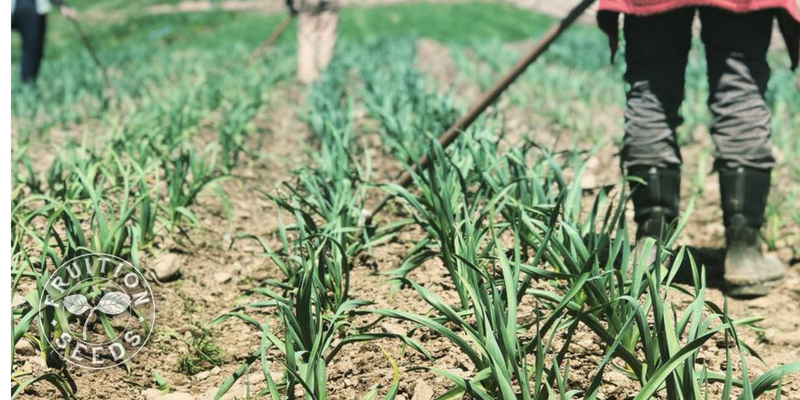
Weed early and often, every ten days to two weeks, if you don’t plan on mulching.
Planting garlic into Biotella, biodegradable black mulch, is actually a great option. The mulch will reduce frost-heaving and warm the soil in spring, inspiring your garlic to grow that much faster. You’ll have complete weed suppression all season long, though you’ll likely need to hand-weed each of the holes once in spring, as the garlic is establishing.
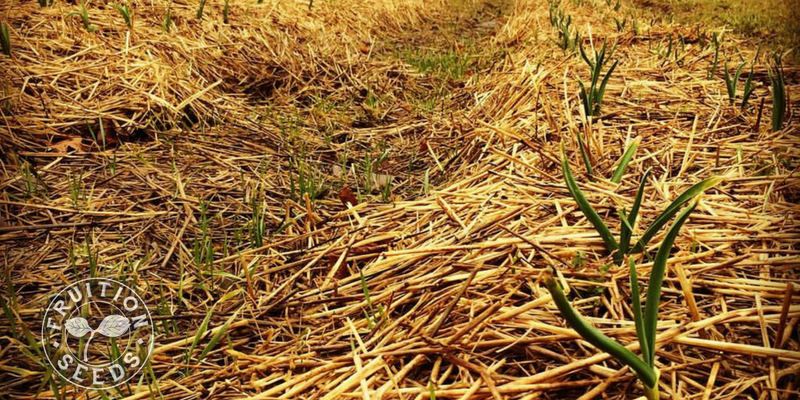
Word to the wise: Straw often has seeds of the grain it grew. This garlic is also growing a crop of wheat.
Mulch like you mean it. You have many great options for other mulches. Our go-to is straw. Hay, even old, moldy hay, is a great choice, as well. Grass clippings are awesome. Shredded deciduous leaves are the dream of the dream. Whatever you use, just be sure it has a minimum of seeds and that you put it on THICK! A six-inch layer of mulch will provide great weed suppression for you. If you mulch in fall, you’ll reduce frost-heaving and know you’ll likely need to add more mulch in spring, the earlier the better, to ensure you’ll never have to weed. The weeds that do grow up in your mulch must be hand-weeded, so it definitely pays to the mulch mantra of early and often.
Regatusso is our favorite soft-neck garlic with massive bulbs, rich aroma and mild pungency.
Take care of your garlic and your garlic will take care of you in all seasons, Friends!
Sow Seeds & Sing Songs,

and the Many Beings of Fruition
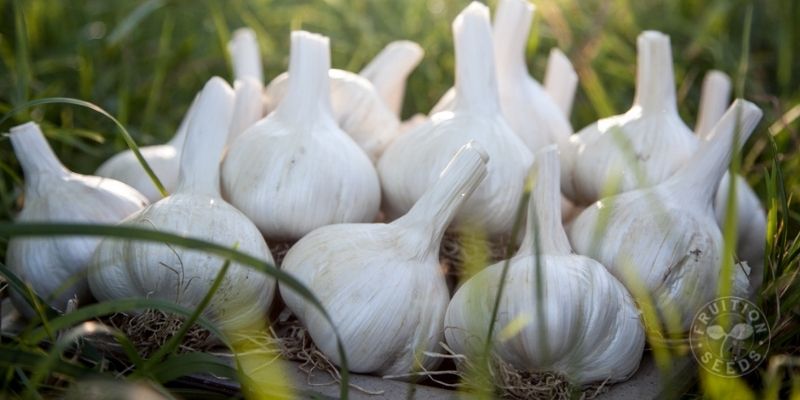

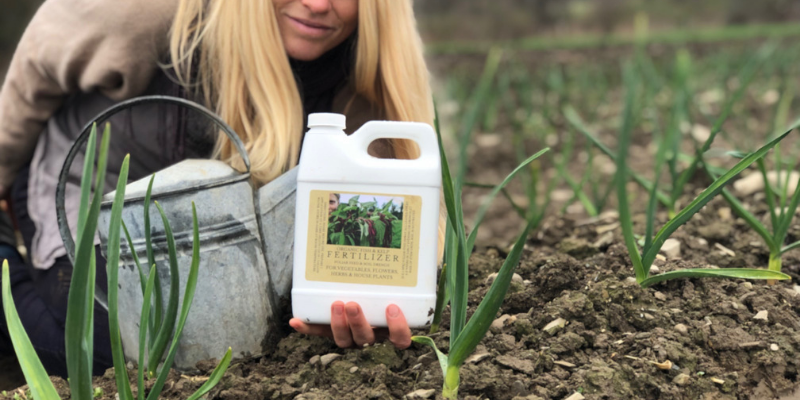
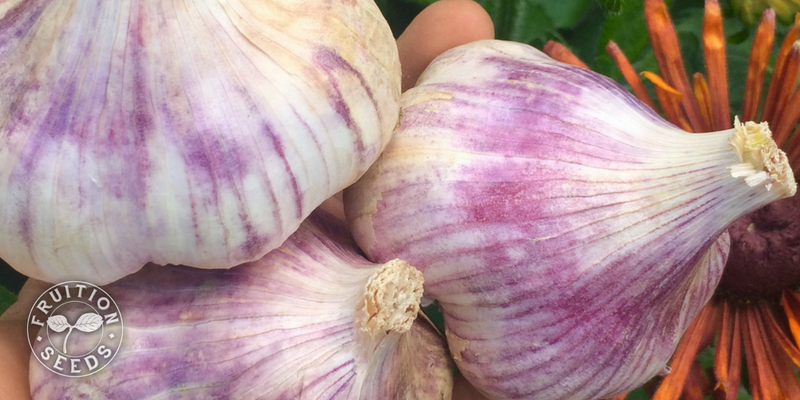
Hi! Thank you for all your tips and tutorials! I purchased ginger from you and some of them didn’t sprout. I waited and waited and finally dug them out to find only the skin of them. What do you think I did wrong? Too much water?